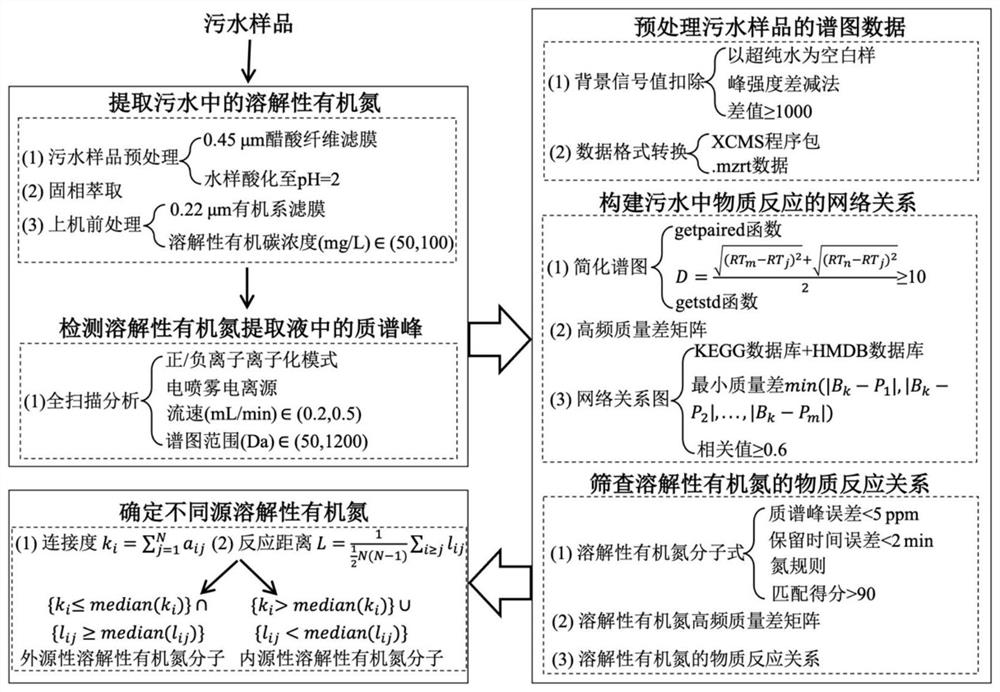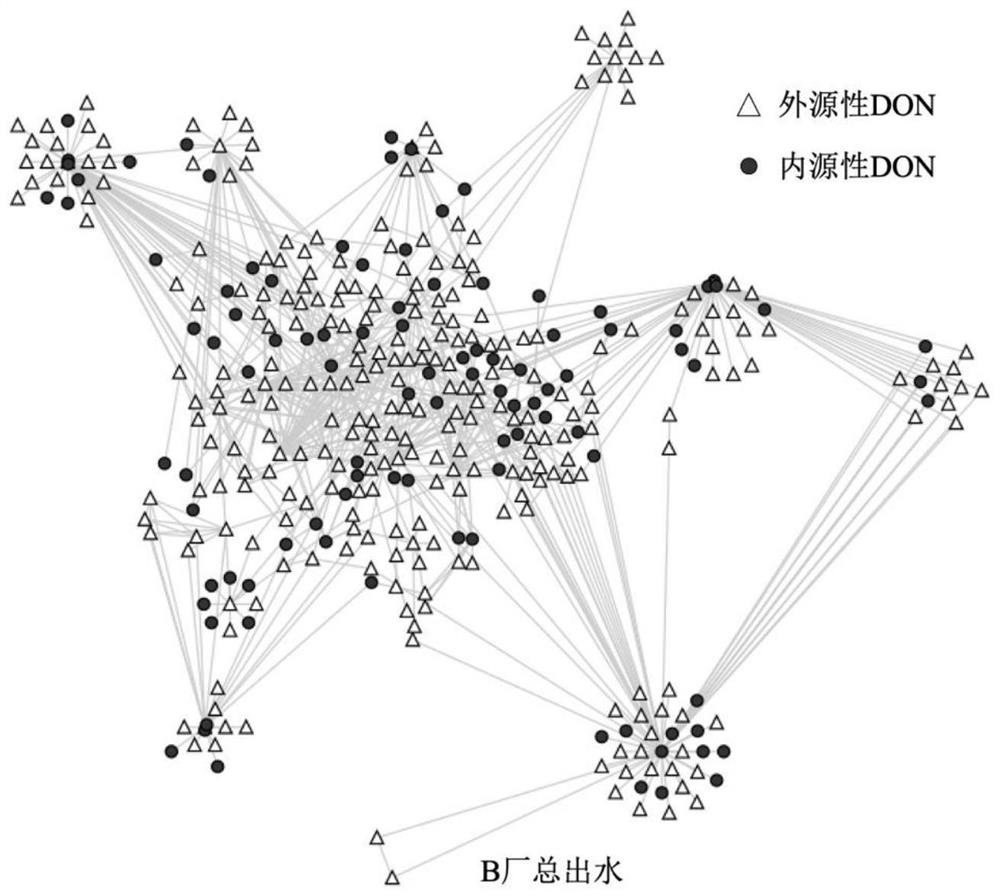Method for discriminating different-source soluble organic nitrogen in sewage and application
A technology of dissolved organic nitrogen and sewage, applied in the direction of testing organic pollutants in water, general water supply conservation, testing water, etc. adaptability, and the effect of improving applicability
- Summary
- Abstract
- Description
- Claims
- Application Information
AI Technical Summary
Problems solved by technology
Method used
Image
Examples
Embodiment 1
[0043] The application object of this embodiment is the effluent of the biological section of a certain sewage treatment plant A. The daily treatment capacity of the plant A is 45,000 cubic meters per day, and the main process is the oxidation ditch process. The effluent from the biological stage contains 25.59mg / L of COD, 7.31mg / L of total nitrogen, 0.40mg / L of total phosphorus, 0.06mg / L of ammonia nitrogen, 2.31mg / L of nitrate nitrogen, 0.09mg / L of nitrite nitrogen, and DON 4.85 mg / L. The steps to distinguish exogenous DON and endogenous DON in the effluent DON of the biological section of plant A are as follows: figure 1 As shown, a method for the identification and analysis of different sources of dissolved organic nitrogen in sewage is to use liquid chromatography-high resolution mass spectrometry technology and reaction omics analysis technology to establish the synchronization of exogenous DON and endogenous DON in sewage samples. Qualitative and quantitative methods, ...
Embodiment 2
[0055] The difference from Example 1 is that the application object of this example is the total effluent of a sewage treatment plant B. The daily treatment capacity of Plant B is 150,000 cubic meters per day, and the main water treatment process is A2 / O process + secondary sedimentation tank + Efficient sedimentation tank + quartz sand filter. The total effluent contains COD 17.32mg / L, total nitrogen 10.95mg / L, total phosphorus 0.10mg / L, ammonia nitrogen 0.33mg / L, nitrate nitrogen 7.47mg / L, nitrite nitrogen 0.04mg / L, DON 3.11mg / L. The steps to distinguish exogenous DON and endogenous DON in the total effluent DON of plant B are as follows: figure 1 As shown, a method for the identification and analysis of different sources of dissolved organic nitrogen in sewage is to use liquid chromatography-high resolution mass spectrometry technology and reaction omics analysis technology to establish the synchronization of exogenous DON and endogenous DON in sewage samples. Qualitativ...
Embodiment 3
[0067] The difference from Example 1 is that the application object of this example is the effluent of the upgrading section of a certain sewage treatment plant C. The daily treatment capacity of the C plant is 60,000 cubic meters per day, and the main water treatment process is the oxidation ditch process. Coagulation pond + denitrification filter will be added after standard transformation. The effluent COD of the upgrading section is 13.13mg / L, total nitrogen 7.34mg / L, total phosphorus 0.03mg / L, ammonia nitrogen 0.16mg / L, nitrate nitrogen 2.94mg / L, nitrite nitrogen 0.06mg / L, DON 4.18mg / L. The identification and analysis steps of exogenous DON and endogenous DON in the effluent of the upgrading section of plant C are as follows: figure 1 As shown, a method and application of discriminating and analyzing different sources of dissolved organic nitrogen in sewage is based on the relationship between exogenous DON and endogenous DON in sewage samples established by using liquid...
PUM
 Login to View More
Login to View More Abstract
Description
Claims
Application Information
 Login to View More
Login to View More - R&D Engineer
- R&D Manager
- IP Professional
- Industry Leading Data Capabilities
- Powerful AI technology
- Patent DNA Extraction
Browse by: Latest US Patents, China's latest patents, Technical Efficacy Thesaurus, Application Domain, Technology Topic, Popular Technical Reports.
© 2024 PatSnap. All rights reserved.Legal|Privacy policy|Modern Slavery Act Transparency Statement|Sitemap|About US| Contact US: help@patsnap.com










